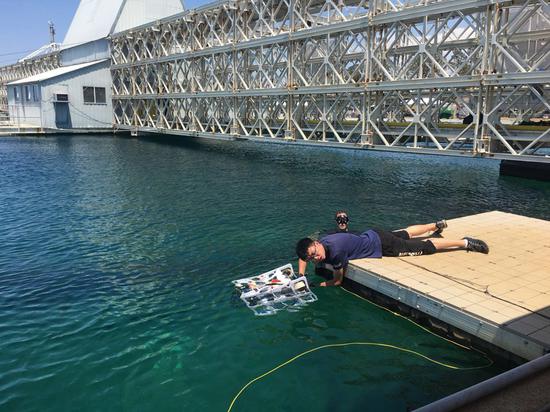American chemical engineers have developed a new sensor that allow them to see inside cancer cells and determine whether the cells are responding to a particular type of chemotherapy drug.
The study, published on Tuesday in the journal Nature Communications, described the sensor that can detect hydrogen peroxide inside human cells.
It can help researchers identify potential cancer drugs that boost levels of hydrogen peroxide, which induces programmed cell death, according to the study.
Also, the sensors could be adapted to screen individual patients' tumors to predict whether such drugs would be effective against them.
"Currently there's a real dearth of quantitative, chemically specific tools to be able to measure the changes that occur in tumor cells versus normal cells in response to drug treatment," said the senior author Hadley Sikes, an associate professor of chemical engineering at Massachusetts Institute of Technology.
Cancer cells often have mutations that cause their metabolism to go awry and produce abnormally high fluxes of hydrogen peroxide.
When too much of the molecule is produced, it can damage cells, so cancer cells are highly dependent on antioxidant systems that remove hydrogen peroxide from cells.
Drugs that target this vulnerability, known as "redox drugs," can work by either disabling the antioxidant systems or further boosting production of hydrogen peroxide. But many such drugs have entered clinical trials with mixed results.
"One of the problems is that the clinical trials usually find that they work for some patients and they don't work for other patients," said Sikes.
"We really need tools to be able to do more well-designed trials where we figure out which patients are going to respond to this approach and which aren't, so more of these drugs can be approved."
The researchers first identified an enzyme called peroxiredoxin that dominated most human cells' reactions with the molecule. One of this enzyme's many functions is sensing changes in hydrogen peroxide levels.
They modified the protein by adding two fluorescent molecules to it: a green fluorescent protein at one end and a red fluorescent protein at the other end.
When the sensor reacts with hydrogen peroxide, its shape changes, bringing the two fluorescent proteins closer together. The researchers can detect whether this shift has occurred by shining green light onto the cells: If no hydrogen peroxide has been detected, the glow remains green; if hydrogen peroxide is present, the sensor glows red instead.
The researchers tested their new sensor in two types of human cancer cells: one set that they knew was susceptible to a redox drug, and another that they knew was not susceptible.
The sensor revealed that hydrogen peroxide levels were unchanged in the resistant cells but went up in the susceptible cells, as the researchers expected.
Sikes envisioned two major uses for this sensor. One is to screen libraries of existing drugs or compounds that could potentially be used as drugs to determine if they have the desired effect of increasing hydrogen peroxide concentration in cancer cells.
Another potential use is to screen patients before they receive such drugs, to see if the drugs will be successful against each patient's tumor.


















































